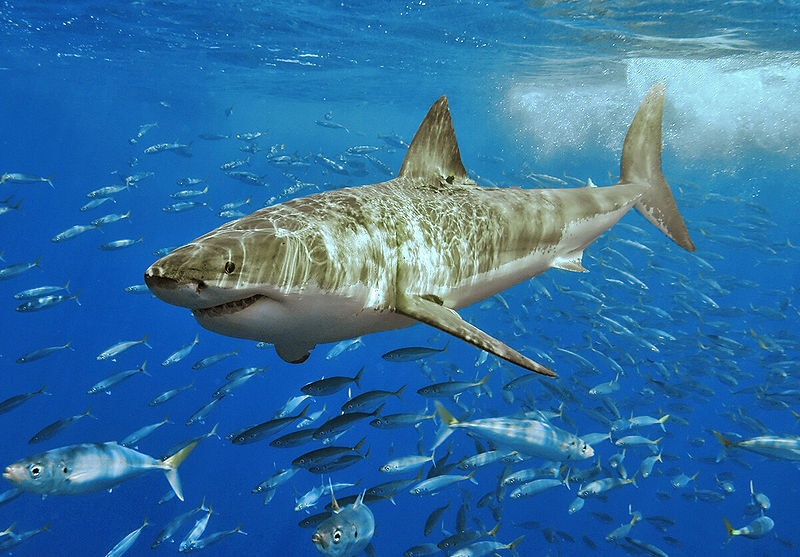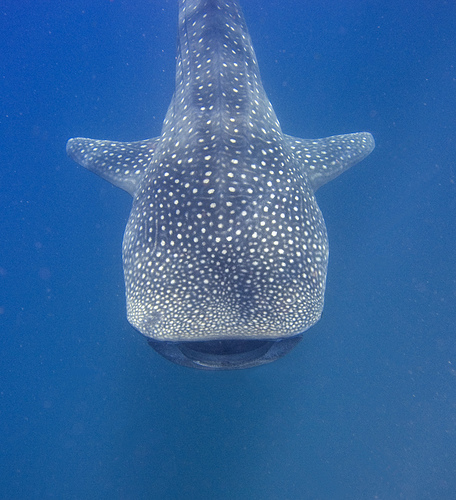
I wrote already about some of the latest technologies that are letting scientists get useful data out of a shark without killing it (including shark ultra-sound and DNA fingerprinting their partially digested puke), and of course there’s a whole lot we can find out by sneaking up on a shark and sticking a tag in it.
Another paper from the team at the RJ Dunlop Marine Conservation Program at U Miami gives the lowdown on shark tagging – summing up all that’s been done and figuring where shark tagging might be headed next. They scrutinized all the published studies they could find that involve satellite tags on sharks and, once again, came up with some pretty interesting stats.
For starters, there are 17 shark species that have towed satellite tags around on their daily lives through the oceans, the most commonly being basking sharks, great whites, and whale sharks – partly, so the paper says, because these fellows tend to congregate in predictable spots in the ocean making them easier for a tag-wielding scientist to find, and also because their at-risk status makes them a research priority. (But I also figure these guys are a bigger target to hit with the tag, no?)
 Sharks have been tracked for everything between zero and 1335 days and over half were tagged in the Pacific – mostly part of the impressive TOPP initiative.
Sharks have been tracked for everything between zero and 1335 days and over half were tagged in the Pacific – mostly part of the impressive TOPP initiative.
And if anyone is looking for a new research project, then how about heading to the poles? So far no sharks have been tagged in the Arctic or Antarctic.
My favourite snippets from this review paper address the question of whether sharks mind being tagged. The authors report on tagged lemon sharks rubbing their backs on the seabed and reef sharks biting tags off each other. Plus they figure there’s a chance that brightly-colored tags on great white sharks could bust their chances of sneaking up on dinner. Researchers can spot a great white’s colorful jewelry before they spy the giant predators themselves racing up from the depths. I guess the question is whether seals do the same thing.
All in all, scientists have so far been doing a great job of using satellite tags to answer the ‘What’ of shark biology. But the huge unanswered question remains WHY. Why are great white sharks loitering together in particular spots in the Pacific? Why do they swim 4000km to Hawaii every year?
These, and many more whys, are the shark puzzles that need solving next.
Neil Hammerschlag, Austin J. Gallagher, and Dominique M. Lazarre’s review of shark tagging studies is published in the journal Experimental Marine Biology & Ecology (here’s a PDF posted on their research webpages).
Leave a Reply